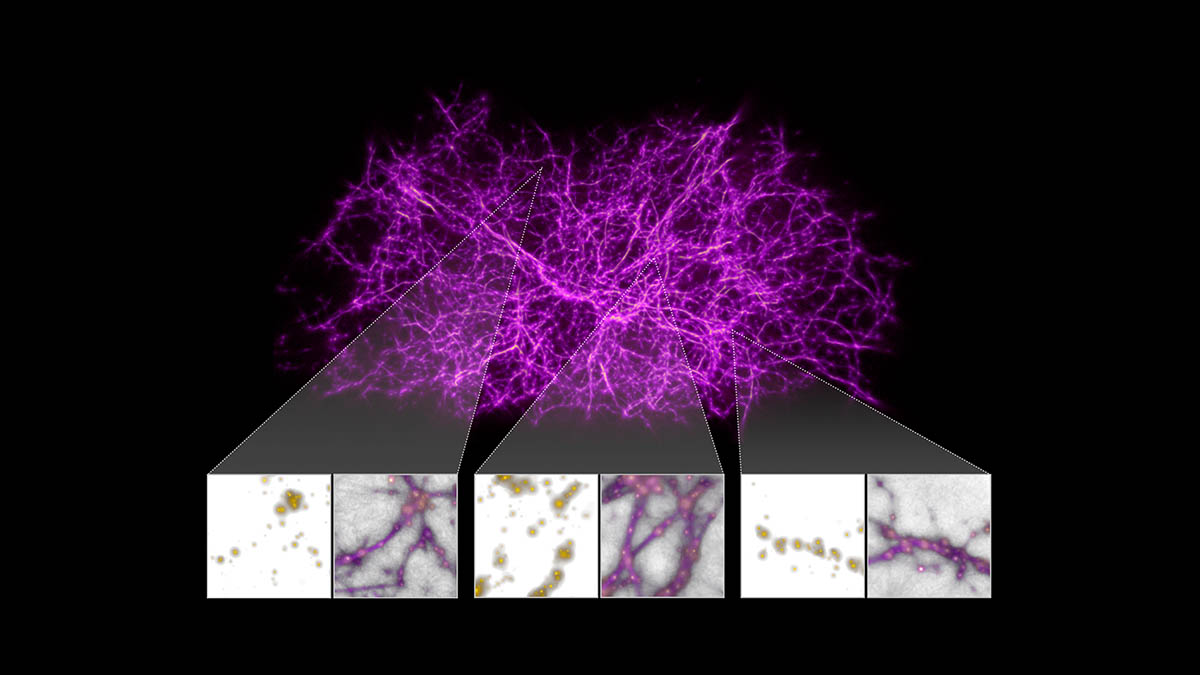Astronomers have gotten creative in trying to trace the elusive cosmic web, the large-scale backbone of the cosmos. Researchers turned to slime mold, a single-cell organism found on Earth, to help them build a map of the filaments in the local universe (within 500 million light-years from Earth) and find the gas within them. (NASA, ESA, and J. Burchett and O. Elek (UC Santa Cruz))
Home Astronomers have gotten creative in trying to trace the elusive cosmic web, the large-scale backbone of the cosmos. Researchers turned to slime mold, a single-cell organism found on Earth, to help them build a map of the filaments in the local universe (within 500 million light-years from Earth) and find the gas within them. (NASA, ESA, and J. Burchett and O. Elek (UC Santa Cruz)) Astronomers have gotten creative in trying to trace the elusive cosmic web, the large-scale backbone of the cosmos. Researchers turned to slime mold, a single-cell organism found on Earth, to help them build a map of the filaments in the local universe (within 500 million light-years from Earth) and find the gas within them. (NASA, ESA, and J. Burchett and O. Elek (UC Santa Cruz))
Astronomers have gotten creative in trying to trace the elusive cosmic web, the large-scale backbone of the cosmos. Researchers turned to slime mold, a single-cell organism found on Earth, to help them build a map of the filaments in the local universe (within 500 million light-years from Earth) and find the gas within them. (NASA, ESA, and J. Burchett and O. Elek (UC Santa Cruz))


